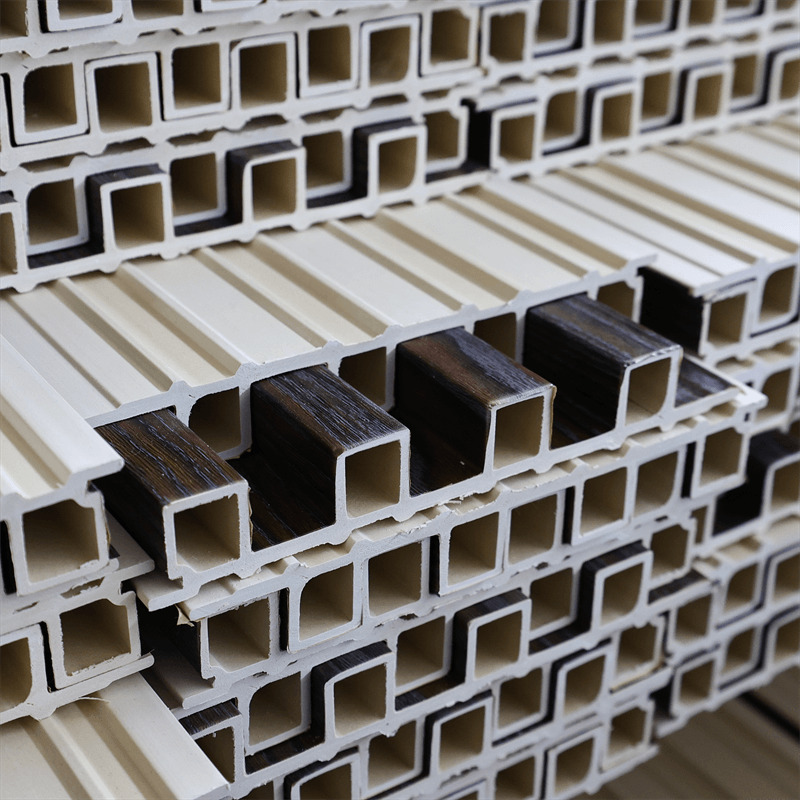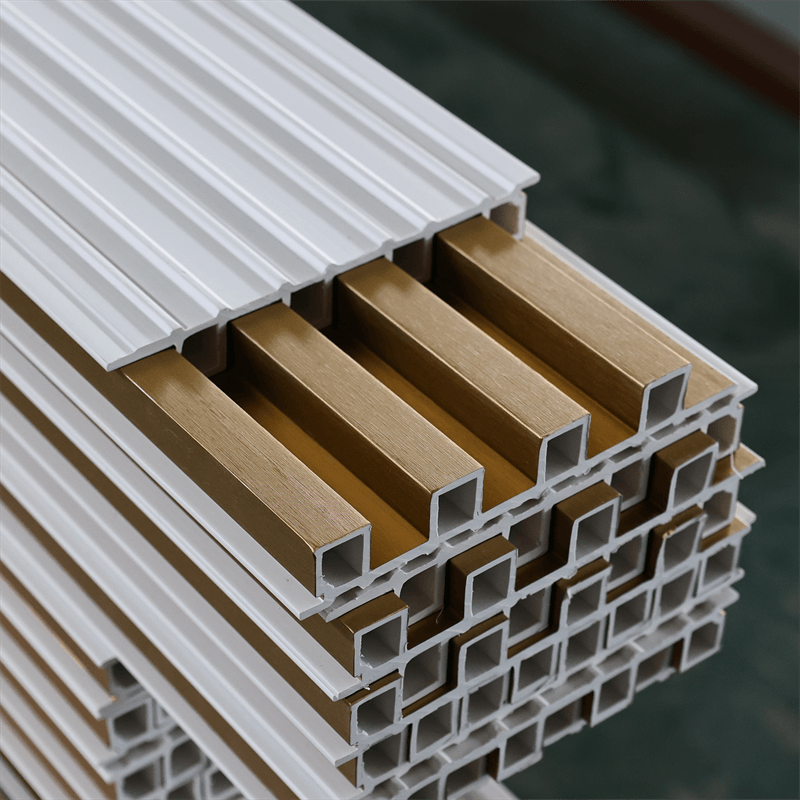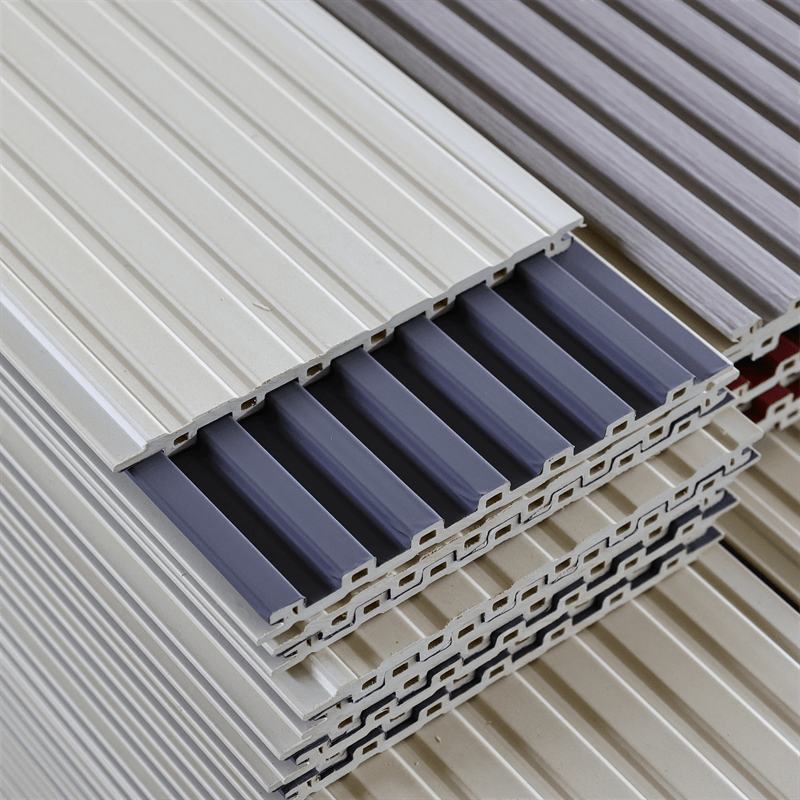Noise pollution is a pervasive issue in today’s urban environments, affecting our health, well-being, and overall quality of life.
In the quest for peaceful and tranquil living spaces, the role of effective sound insulation and noise reduction measures becomes crucial.
WPC (Wood-Plastic Composite) wall panels offer a promising solution in mitigating noise pollution.
This essay explores the role of WPC wall panels in noise pollution mitigation, focusing on their sound insulation properties, design flexibility, sustainability, and practical applications.
By understanding these aspects, we can comprehend how WPC wall panels contribute to creating quieter and more comfortable living environments.

I. Sound Insulation Properties of WPC Wall Panels:
- Acoustic Performance: WPC wall panels exhibit excellent sound insulation properties, reducing the transmission of airborne noise and vibrations. The combination of wood fibers and thermoplastic polymers in the panel’s composition creates a material that effectively absorbs and dampens sound waves, minimizing their propagation through walls.
- Noise Reduction Coefficients (NRC): WPC wall panels with higher NRC values indicate greater sound absorption capacity. These panels absorb sound energy, preventing excessive reverberation and reducing overall noise levels within a room or space. The NRC values of WPC panels can be optimized by using suitable thicknesses and installation techniques, further enhancing their noise-reducing capabilities.
II. Design Flexibility and Aesthetic Integration:
- Versatile Design Options: WPC wall panels offer a wide range of design options, allowing for seamless integration into various architectural styles and interior designs. They are available in various colors, patterns, and finishes, enabling homeowners and designers to create aesthetically pleasing spaces while also addressing noise concerns.
- Customization and Integration: WPC panels can be easily cut, shaped, and installed, making them suitable for both new constructions and retrofit applications. They can be integrated as wall cladding, partitions, or accent features, providing flexibility in addressing specific noise sources and optimizing sound insulation in different areas of a building.
III. Sustainability and Environmental Considerations:
- Recycled and Eco-Friendly Materials: WPC wall panels often incorporate recycled materials, such as wood fibers and post-consumer plastics. By utilizing these recycled resources, WPC panels contribute to reducing waste and promoting sustainable practices. Additionally, the production process of WPC panels consumes less energy and emits fewer greenhouse gases compared to traditional building materials.
- Longevity and Durability: The durability of WPC wall panels ensures their longevity and reduces the need for frequent replacements. This long lifespan contributes to resource conservation and reduces the environmental impact associated with manufacturing and disposal of conventional wall materials.
IV. Practical Applications:
- Residential Spaces: WPC wall panels find extensive use in residential spaces to create quieter and more peaceful living environments. They can be installed in bedrooms, living rooms, home offices, and other areas where noise control is essential, providing residents with a more comfortable and restful living experience.
- Commercial and Public Spaces: WPC wall panels are also valuable in commercial and public spaces where noise pollution is a concern. These include offices, conference rooms, hotels, restaurants, schools, hospitals, and other public buildings. By incorporating WPC panels in these spaces, a quieter and more conducive environment can be created, promoting productivity, concentration, and overall well-being.
WPC wall panels play a significant role in noise pollution mitigation by providing effective sound insulation and noise reduction properties.
Their sound absorption capabilities, design flexibility, sustainability, and practical applications make them a valuable solution for creating quieter and more comfortable living and working environments.
By incorporating WPC panels, we can reduce the impact of noise pollution, improve our quality of life, and enhance our overall well-being.
As the demand for noise control solutions grows, WPC wall panels are emerging as an innovative and effective choice in the quest for quieter spaces.

In conclusion, WPC wall panels offer a promising solution in mitigating noise pollution and creating more peaceful environments.
Their sound insulation properties, design flexibility, sustainability, and practical applications make them a valuable tool in noise reduction efforts.
With their ability to absorb and dampen sound waves, WPC wall panels contribute to reducing airborne noise transmission and minimizing vibrations.
Their versatility in design allows for seamless integration into various architectural styles, ensuring that noise mitigation does not compromise aesthetic considerations.
Moreover, the use of recycled materials in WPC panels promotes sustainability and environmental responsibility.
WPC wall panels find practical applications in both residential and commercial spaces, addressing the need for noise control in bedrooms, living areas, offices, conference rooms, and public buildings.
By incorporating WPC panels, we can create quieter and more comfortable environments that enhance productivity, concentration, and overall well-being.
As urban areas continue to face the challenges of noise pollution, it is essential to prioritize effective noise mitigation strategies.
WPC wall panels offer a sustainable and versatile solution that combines functionality and aesthetics.
By understanding their role in noise pollution mitigation, we can make informed decisions when designing and constructing spaces that prioritize peace and tranquility.
In the pursuit of healthier and more livable environments, the integration of WPC wall panels represents a step forward in combating noise pollution and creating spaces that promote well-being.
By investing in sound insulation measures such as WPC wall panels, we can make significant progress in reducing the impact of noise pollution and fostering more harmonious living and working environments for all.

